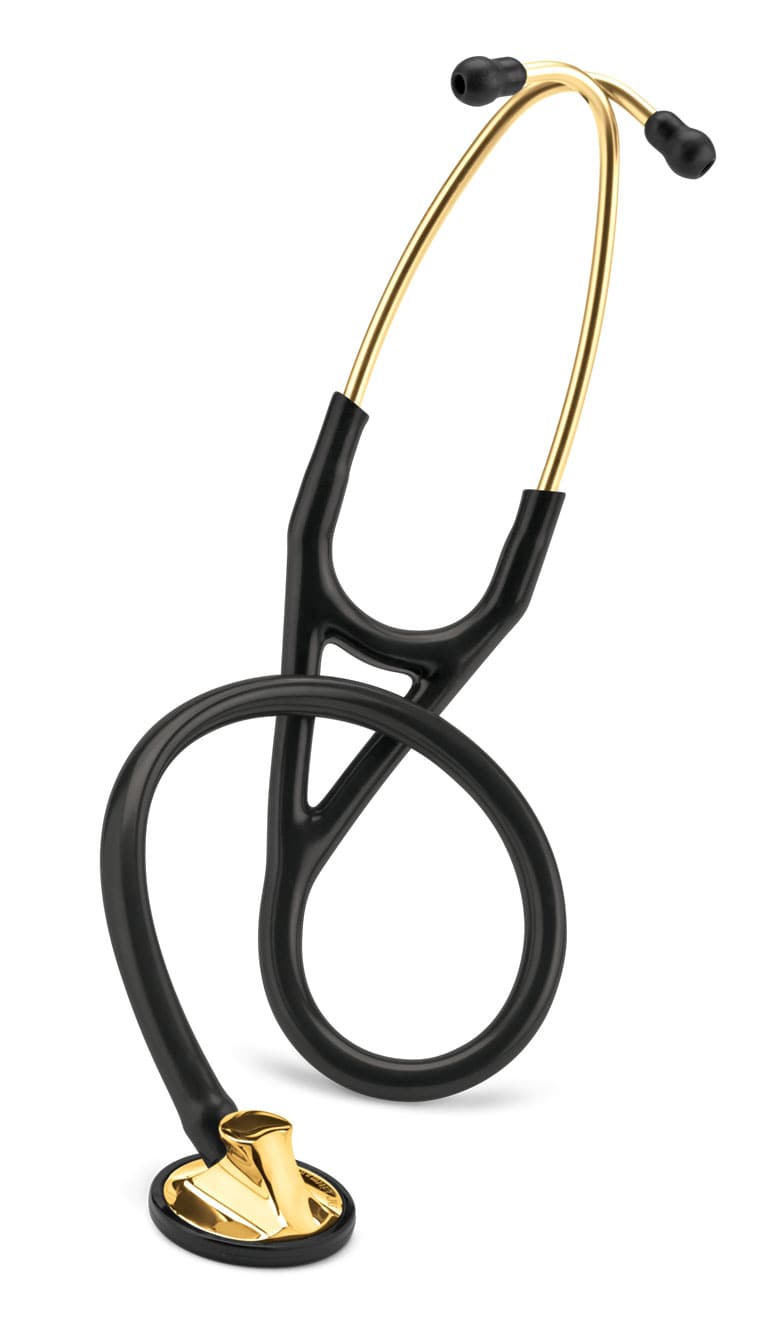Use instructions of Littmann Master Cardiology by 3M
Changing frequencies by using the double-frequency membrane
The 3M Littmann Master Cardiology features a double-frequency membrane that allows you to hear both low and high frequency sounds without the need to alternate the side of the chestpiece.
Low frequencies: In order to focus on low-frequency sounds you should apply very little pressure to the chestpiece when examining the patient.
High frequencies: In order to make high-frequency sounds more audible, you should apply intense pressure to the chestpiece when examining the patient.
This makes it possible to interchange between the two without turning the chestpiece on the other side.
See all Littmann Master Cardiology stethoscopes here
Earphones adjustment:
Your new Littmann stethoscope is designed to ensure a comfortable and isolating application on your ears. The earphones have been manufactured to fit a wide spectrum of the human acoustic pores anatomy. The earphones must point to the front as you insert them onto your ears.
To reduce the spring tension of the earphones, hold each arm on its curb point at the edge and gradually take them apart.
To increase the spring tension of the earphones, hold them with one hand on the point where the arms enter the plastic tube and press until the tube of the one touches the tube of the other. Repeat as needed.
For maximum acoustic performance, your stethoscope comes with a pair of soft eartips of the 3D Littmann patented technology. This stethoscope features a unique design to allow a perfect fitting of the tips onto the eartube. The tips are held steadily and firmly in place, and for their removal the user has to pull them strongly.
Removal of the membrane and cleaning of the chestpiece
With the membrane side facing upwards, hold the rim with your thumb and your index finger and unscrew the rim until it pops out of the chestpiece edge. Then, remove the membrane from the rim and clean the components by using soap water or alcohol. Before you reassemble the pieces back into place, make sure that you wipe and dry them well.
Installing and replacing the double-frequencies membrane
With the tip of your finger, place a small amount of talc powder on the inner surface of the flexible membrane. This will help you install the pieces back into place easier and without the risk of damaging or undermining their operational performance. Once the membrane is installed, tap with your finger so that the excessive amount of talc is removed.
Place the flexible edge of the membrane inside the rim notch. The best way to do this is by starting with the rim being placed on top of the readable side of the membrane.
Examine the ring to ensure that the flexible edge has indeed been properly installed onto the rim. If needed, bend the installed membrane by pressing the outer edge of the rim between your thumb and your fingers. Repeat the same action after having rotated the assembly by a quadrant.
To install the rim with the membrane on the chestpiece, pass the notch of the rim around the chestpiece while keeping it into position with your thumbs.
Roll the rim carefully around and above the edge of the chestpiece by using both of your thumbs, moving them in opposite directions around the chestpiece.
Examine the edge where the membrane passes on the rim to ensure that is uniformly held. You may perform minor adjustments if you pull slightly and remove the rim around the membrane, allowing it to take its optimal position.
Special applications adapter:
With the 3M Littmann Master Cardiology stethoscope, you can achieve an ultimate level of tightness between the chestpiece and the skin of the patient. The special applications adapter is basically useful for the cases of hearing small points on the body, as it is reducing the chestpiece diameter. It is made of rubber so it is comfortable. It is especially useful for weak patients, children, and areas such as around bandages, or for carotid assessments.
The special applications adapter is intended to be installed on top of the diaphragmatic side of the chestpiece. This way, it increases doctor’s ability to locate the sources of both low and high frequency sounds.
You may install the adapter onto the chestpiece by pressing it on top of the diaphragm. Similarly, you can easily remove it by pulling it away. Cleaning the adapter may only be done with the use of alcohol or warm soapy water.
General use and maintenance:
Avoid high heat, cold, oils, and solvents.
The whole stethoscope may be cleaned with alcohol or soapy water.
The ear tips can be removed for thorough cleaning.
NOTE: The stethoscope must never be sunk in any kind of liquid or to be sterilized with steam. If you need to sterilize the stethoscope, you may do so by using isopropyl alcohol of no more than 70% of concentration.
See also: Littmann Cardiology IV usage instructions / 3M Littmann stethoscopes








